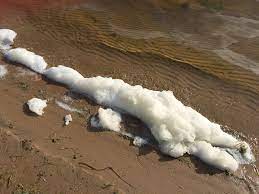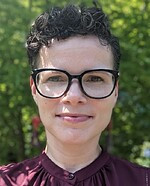
Per- and polyfluoroalkyl substances (PFAS) are a class comprising thousands of ‘forever chemicals’ that are environmentally persistent and present in soils, drinking water, foods, and in the bodies of wildlife and people worldwide. PFAS are used in a wide variety of consumer products, industrial applications, and fire-fighting foams because of their stain resistance, durability and nonstick properties.
PFAS’ environmental persistence and
On November 11th, CHE-Alaska will be joined by Dr. Carla Ng, an Assistant Professor at the University of Pittsburgh, who leads a research lab modeling how
In Alaska, the risk of PFAS exposure is heightened by decades of dispersive use of PFAS-containing firefighting foams at airports and military bases, releases from these facilities, and PFAS contamination of essential water supplies throughout the state. The investigative report on PFAS by Alaska Community Action on Toxics identified more than 100 individual PFAS source areas at nearly 30 locations across Alaska (see ACAT’s 2019 report below).
To help protect future generations, we urgently need comprehensive state and federal policies to end unnecessary uses of PFAS. In the Alaska State Legislature, bills have been introduced by Sen. Jesse Kiehl and Rep. Sara Hannan, Senate Bill 121 and House Bill 171, to establish enforceable drinking water standards, phase out the use of PFAS in firefighting foam, and provide testing and safe water sources for communities affected by PFAS contamination. At the federal level, several bills have been introduced to protect drinking water and contaminated communities, prevent firefighter exposures, provide funding for remediation; and regulate PFAS in food packaging, textiles, personal care products, and firefighting foams.
Featured Speaker
 Dr. Carla Ng is an Assistant Professor
Dr. Carla Ng is an Assistant Professor
This call is hosted by the CHE-Alaska Partnership, which is coordinated by Alaska Community Action on Toxics (ACAT). It will last for 60 minutes and will be recorded for the call and webinar archive.
